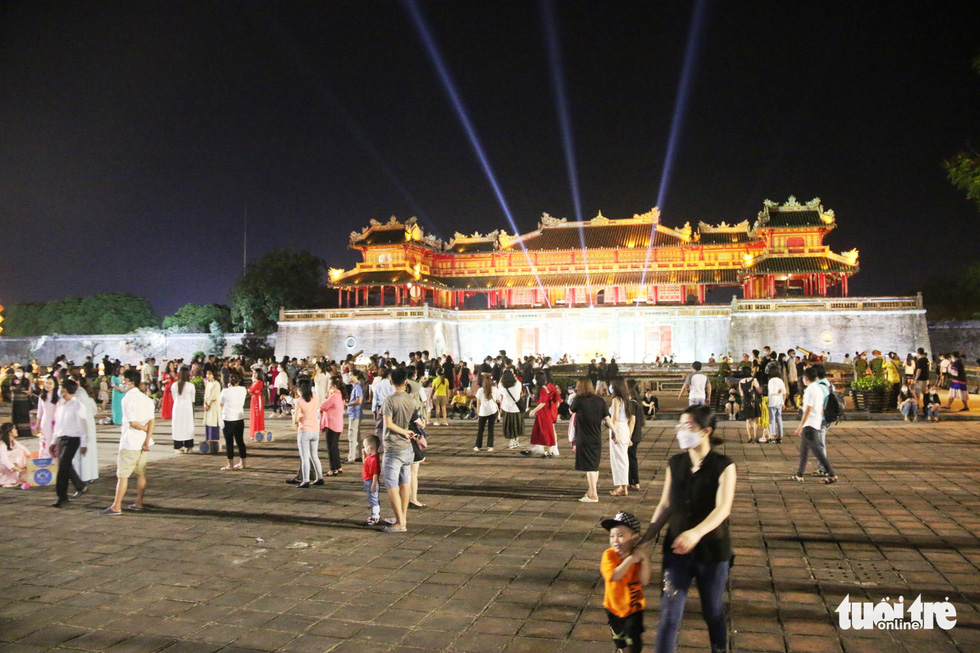The administration of Hue City, in central Vietnam, launched a night street zone around the Hue Imperial Citadel City, a UNESCO-recognized World Cultural Heritage, on Thursday evening, after a long delay due to COVID-19.
The pedestrian night street zone, opens from 7:00 to 11:00 pm every Friday and Saturday, is designed to span four streets, namely August 23, Le Huan, Dang Thai Than, and Doan Thi Diem.
However, in its initial pilot stage, it will cover the two former streets only, the Vietnam News Agency reported.
The zone connects with other areas in the Hue Imperial Citadel, including Tinh Tam Lake - Hoc Hai Lake, the Tang Tho Lau (Library), the Tran Binh Dai - Mang Ca garrison area, the Ngu Ha River, and the Thuong Thanh - Eo Bau section.
 |
| An art performance on the opening day of the night street zone around Hue Imperial Citadel City is seen in this image. Photo: Nhat Linh / Tuoi Tre |
As one of the new tourism products, it is expected to help revive the local tourism industry that has suffered serious damage by the COVID-19 pandemic over the past two years.
It was previously slated to be launched on January 1 this year but was postponed as the city had to focus its efforts on the coronavirus fight.
Besides the pedestrian space, the night street zone offers visitors unique royal art programs, folk games, along with charming traditional craft products and special Hue cuisine.
Such programs and games will take place on three main stages and four community performance areas, while handicrafts will be displayed and sold at 27 stalls.
This is the third pedestrian night street zone of Hue City after the one located along the Huong River and another that covers Chu Van An, Vo Thi Sau and Pham Ngu Lao Streets, which is called the ‘Tay’ (Western) street zone.
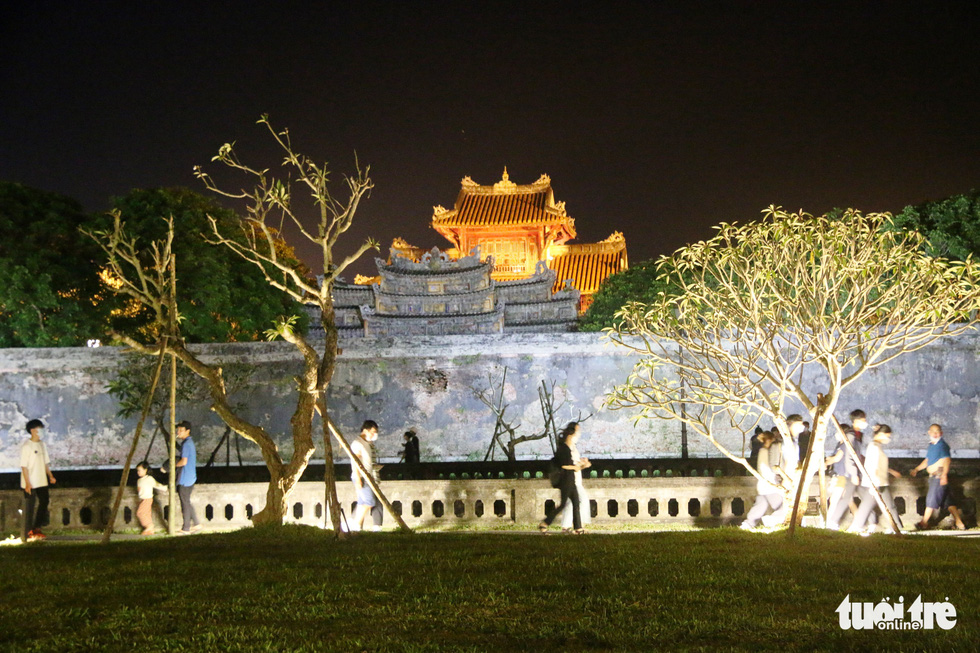 |
| This image shows a pedestrian street section in front of the Hue Imperial Citadel City. Photo: Nhat Linh / Tuoi Tre |
This night street zone is a special cultural venue, where locals are encouraged to hang lanterns at home to create harmony with the zone at nighttime, said Vo Le Nhat, chairman of the city’s administration.
Visitors will experience Hue’s unique royal culture and folklore, which cannot be found anywhere else, Nhat added.
“Especially in this pedestrian zone, we do not allow the sale of beer and alcohol,” the chairman emphasized.
Hue City, in Thua Thien - Hue Province, was Vietnam’s capital during the Nguyen Dynasty from 1802 to 1945, and its imperial relic site was recognized as a World Cultural Heritage by UNESCO in 1993.
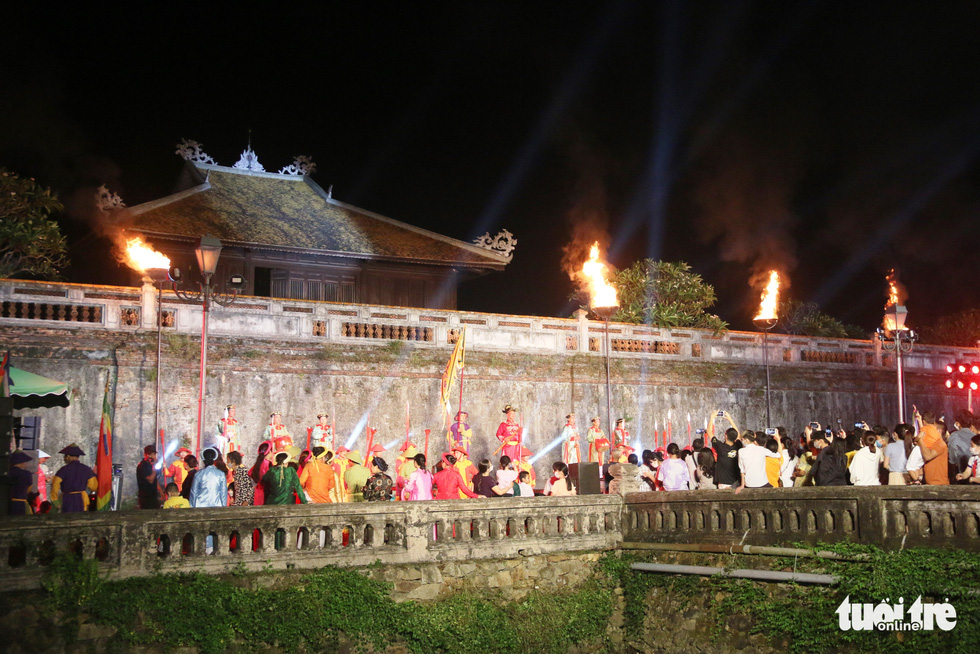 |
| This image shows audiences enjoying a performance in the night street zone, which reconstitutes royal soldiers changing their night watch shift at the Hue Imperial Citadel City during Vietnam’s Nguyen Dynasty. Photo: Nhat Linh / Tuoi Tre |
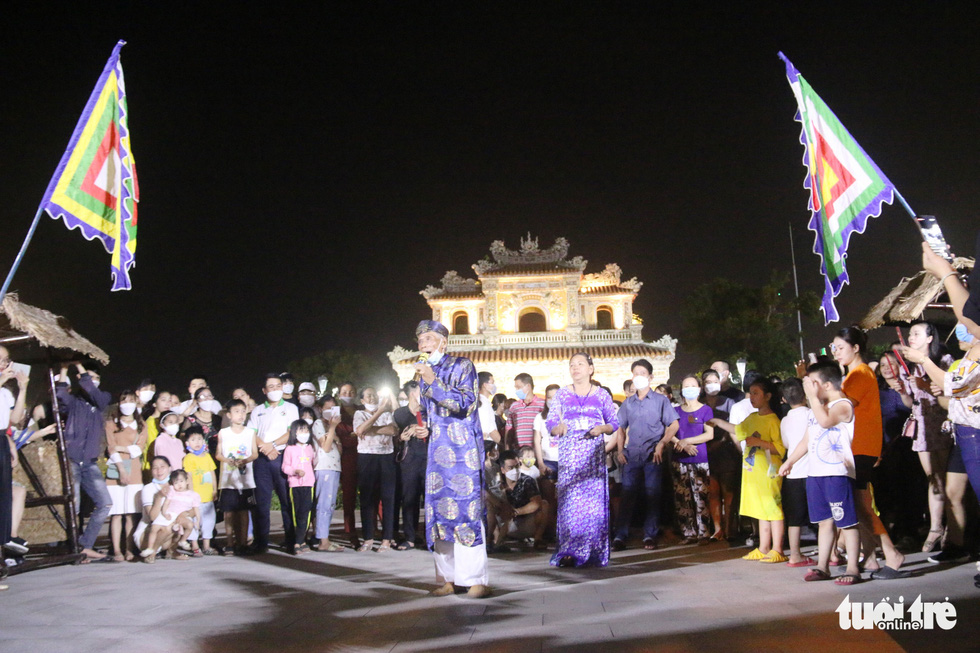 |
| A folk music performance in the Hue Imperial Citadel City area is seen in this photo. Photo: Nhat Linh / Tuoi Tre |
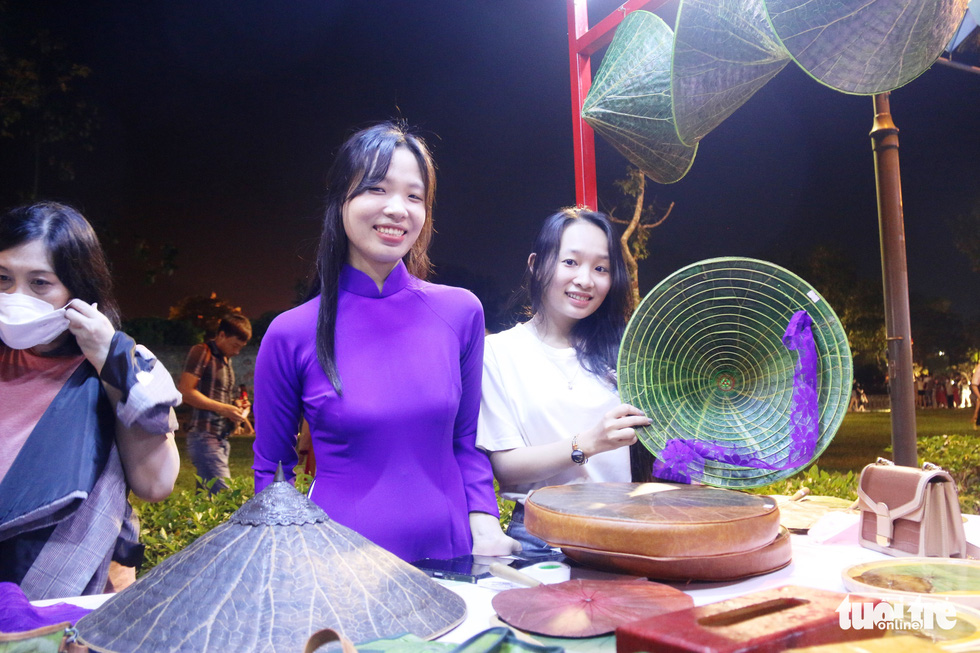 |
| Hue’s ‘non la’ (conical hats) made from lotus leaves are seen at a stall in the night street zone in this photo. Photo: Nhat Linh / Tuoi Tre |
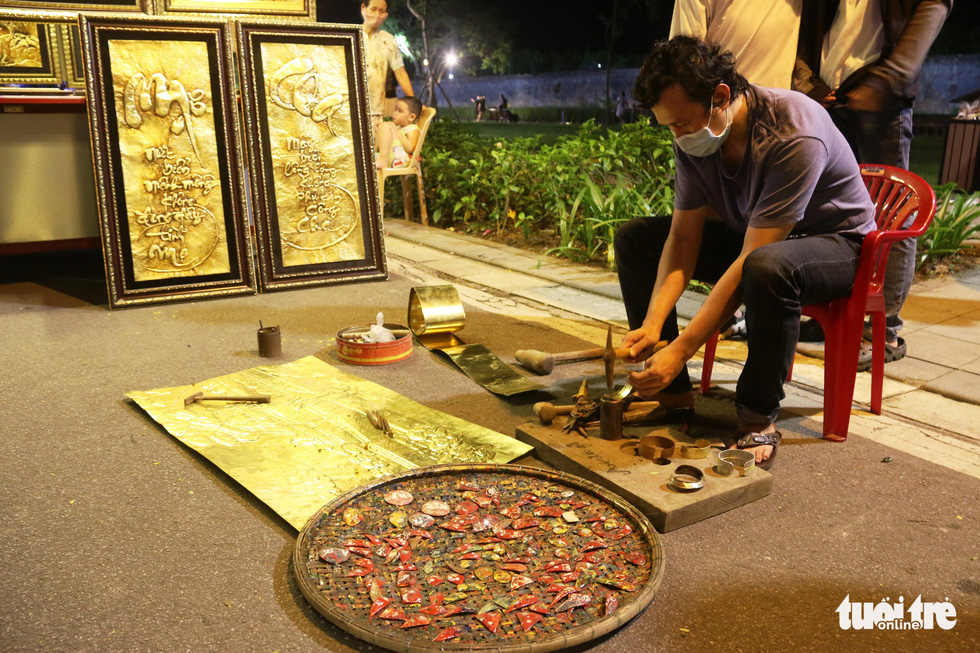 |
| This image shows a bronze-casting artisan performing the process of making jewelry products in the night street zone. Photo: Nhat Linh / Tuoi Tre |
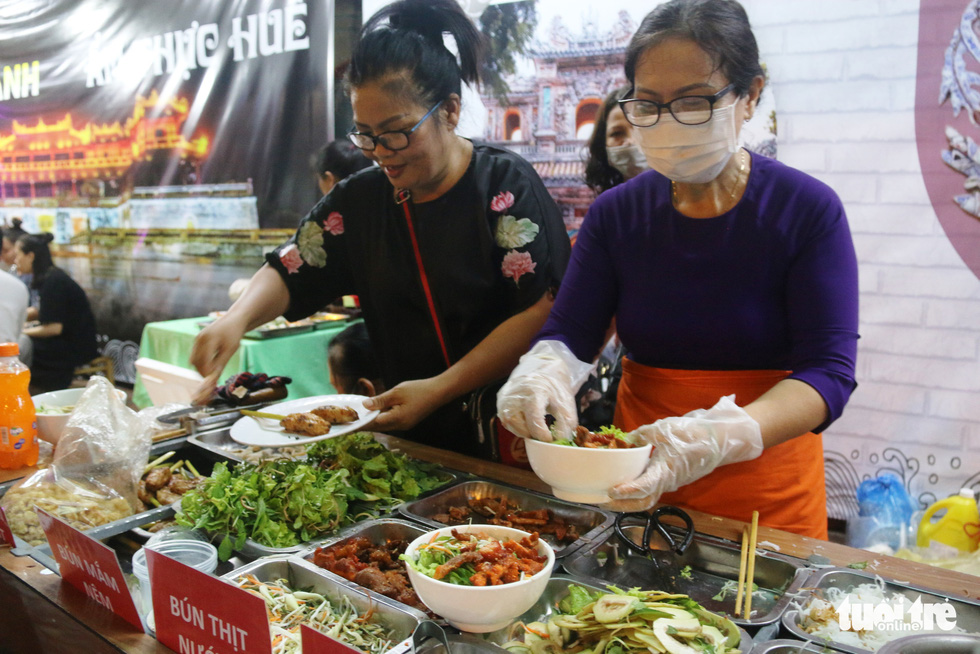 |
| A stall of Hue cuisine in the night street zone is seen in this photo. Photo: Nhat Linh / Tuoi Tre |
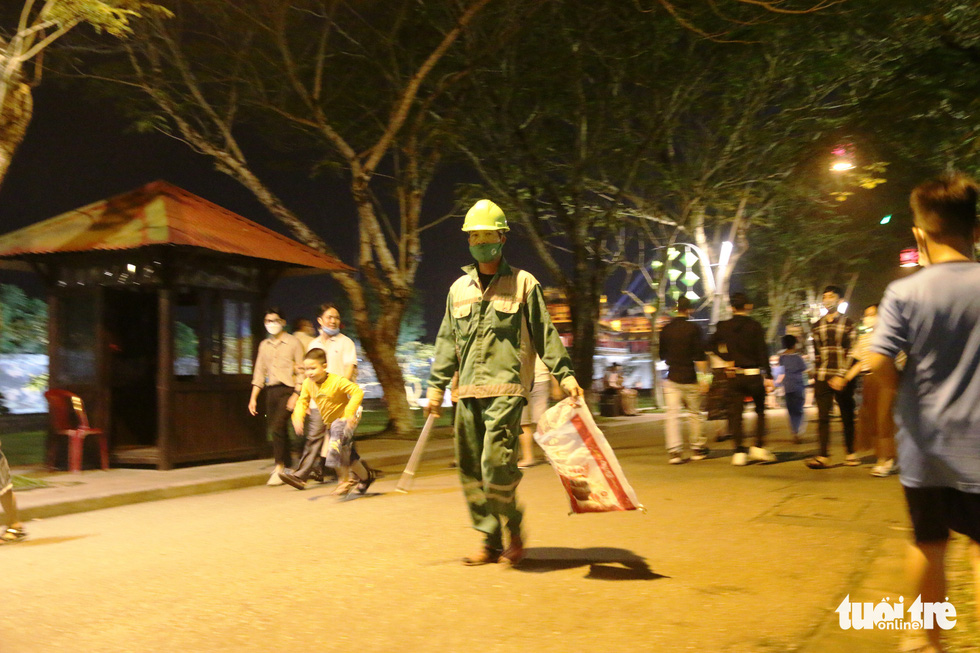 |
| This image shows an environmental worker assigned to collect waste from the pedestrian streets in the night street zone around the Hue Imperial Citadel City on April 22, 2022. Photo: Nhat Linh / Tuoi Tre |
Like us on Facebook or follow us on Twitter to get the latest news about Vietnam!



